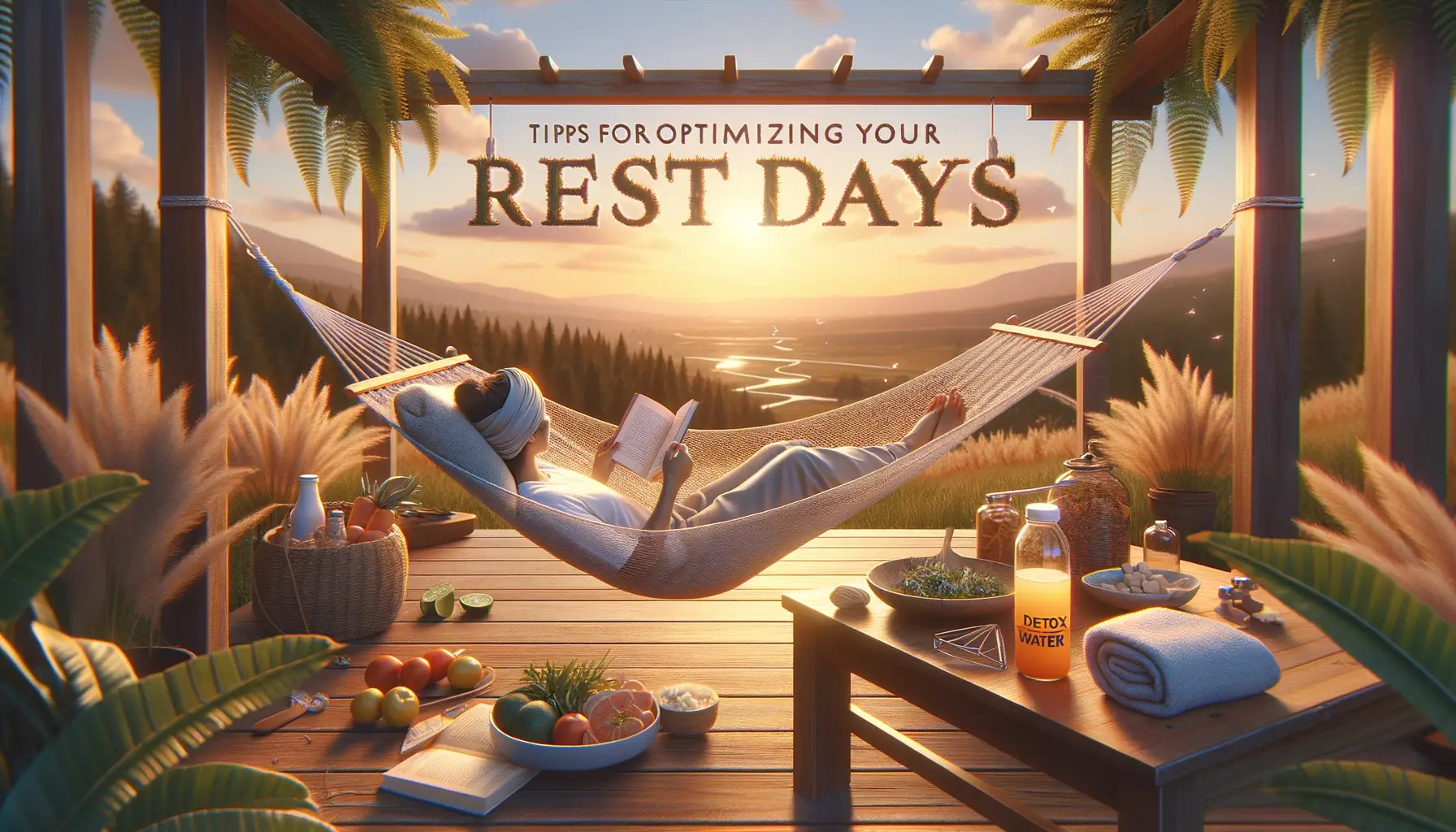
Why Rest Days Are Crucial for Your Fitness Progress
The Importance of Rest Days in Fitness
Why Taking a Break Can Boost Your Workout Game
Let’s be real—when you’re crushing your fitness goals, hitting the gym feels unstoppable. But here’s a truth bomb: progress isn’t just made through sweat and reps. It’s in the moments of stillness, too. Rest days are like that unsung hero in an epic movie, quietly shaping the success behind the scenes.
Think about it: when you work out, you’re actually creating tiny tears in your muscles. On rest days, your body repairs those micro-tears, making your muscles stronger and more resilient. Without this downtime? You’re like a car running on fumes—eventually, you’ll stall.
Here’s why rest days can feel like pure magic:
- Energy Reloaded: Skipping rest means you risk burnout. A day off recharges your mind and body, so you return stronger.
- Injury Prevention: Overtraining can lead to fatigue, and fatigue invites injuries. Nobody wants their workout streak broken by something preventable.
- Better Performance: Think of rest as sharpening your tools. It refines your endurance, strength, and coordination for peak performance.
So take that rest day unapologetically—it’s not “slacking.” It’s strategy.
How Rest Days Impact Muscle Recovery and Growth

What Happens to Your Muscles on Rest Days?
Picture this: when you’re crushing those weights or sprinting like the wind, you’re not just building strength—you’re actually creating tiny tears in your muscle fibers. Sounds dramatic, right? But it’s a good thing! These micro-tears are what trigger your body’s healing system to kick into action. Enter the hero of our story: rest days.
During rest, your body stitches those microscopic tears back together stronger than they were before. This process, known as muscle protein synthesis, is where real growth happens. Skipping your recovery time? That’s like baking a cake and pulling it out of the oven halfway—it just doesn’t work.
Here’s what your muscles gain from resting:
- Boosted repair: Your muscles recover faster and with better results.
- Glycogen replenishment: Think of glycogen as your body’s fuel tank—rest fills it back up for your next workout.
- Reduced inflammation: Your body calms the “storm” created by intense exercise so you stay injury-free.
Why take the scenic route in your fitness journey when rest days can be your shortcut to sustainable progress? They’re not a luxury—they’re non-negotiable.
Potential Risks of Skipping Rest Days

Why Overtraining Could Backfire on Your Goals
Picture this: you’re so pumped about hitting your fitness goals that you power through your workouts every single day, thinking “no pain, no gain,” right? Wrong. Skipping rest days isn’t just risky—it’s downright counterproductive. You might think you’re hustling hard, but your body sees it differently. Without proper recovery, it’s like revving a car engine without ever stopping for gas.
Here’s what could happen when you push too hard:
- Increased risk of injuries: Overworked muscles and joints lose their stability, making you an easy target for strains, sprains, or worse.
- Burnout: That fiery motivation you once had? It can fizzle out into complete exhaustion—physically and mentally.
- Plateaus in progress: Ironically, hammering away without resting can stall your strength and endurance gains.
Signals You’re Pushing Past Your Limits
Your body’s smarter than you think, and it sends red flags when you’ve gone too far. Struggling to pull yourself out of bed, feeling unusually moody, or noticing that nagging ache that *just won’t quit*? That’s your body begging for a break. Listen to it! Skipping rest days may feel like you’re staying ahead, but in reality, you’re digging yourself into a hole you may not easily crawl out of.
Tips for Optimizing Your Rest Days

Embrace Active Recovery for Maximum Benefit
Sure, lounging on the couch all day feels tempting, but let’s give your rest days a little glow-up. Resting doesn’t mean becoming one with your sofa! Instead, try active recovery. Think low-impact activities that keep you moving while still easing up on your muscles.
- Yoga or stretching routines: These will not only improve flexibility but also calm your mind—double win!
- Leisurely walks in nature: Hit a nearby trail, breathe in the fresh air, and let the gentle movement revitalize your body.
- A casual swim or bike ride: Both are easy on your joints and help boost blood flow for speedy muscle recovery.
Nourish Your Body Like It Deserves
Your rest days are also perfect for dialing in on nutrition and hydration. Imagine this: your sore muscles are shouting, “Feed me!” Don’t ignore them. Load your plate with lean proteins, vibrant veggies, and healthy fats. Oh, and don’t forget good carbs—they’re not the enemy; they’re your fuel.
Hydrate like a champ, too. Your muscles need water to repair properly, so keep that bottle within arm’s reach all day. Bonus points for adding a splash of lemon for some zing!
Finding the Balance: Creating a Sustainable Workout Schedule

Why a Balanced Schedule Is Your Secret Weapon
Finding the perfect workout rhythm isn’t about squeezing in as many gym sessions as humanly possible—it’s about dancing to the beat of your body’s needs. Yes, your body talks! Sometimes it’s whispering, “Give me a challenge,” and other times it’s screaming, “I need a breather!” The magic lies in syncing the two.
A sustainable schedule isn’t rigid; think of it as flexible scaffolding—strong enough to support your goals but adaptable to real life (because, hey, things come up). Start by considering your weekly commitments outside fitness: work, family, that Netflix binge you’ve been promising yourself. Next, build around these priorities with structured *and* rest-friendly programming.
- 2-3 strength training days: Lift, squat, and conquer, but pair intensity with quality over quantity.
- 1-2 active recovery days: Think yoga, walking your dog, or swimming—movement without pressure.
- 1-2 full rest days: Couch potato moments matter more than you realize.
Balance is not laziness—it’s strategic. Overtraining leads to burnout faster than your favorite Spotify playlist can loop back. Rest doesn’t mean stopping—it means listening, recalibrating, and coming back stronger.
You may also like
Latest Articles
- Old Age Is a Joy Nowadays: Free Games That Will Help to Boost Your Memory

- The Historical Significance of Coins Depicting Sports

- Mental Training for the Self: How to Stay You Without Disappearing in Others

- Why Strength and Conditioning Are Vital for Athletes

- How to Organize a Fitness Fundraiser with a Coin Collecting Twist

Calendar
| M | T | W | T | F | S | S |
|---|---|---|---|---|---|---|
| 1 | 2 | 3 | 4 | 5 | ||
| 6 | 7 | 8 | 9 | 10 | 11 | 12 |
| 13 | 14 | 15 | 16 | 17 | 18 | 19 |
| 20 | 21 | 22 | 23 | 24 | 25 | 26 |
| 27 | 28 | 29 | 30 | 31 | ||
